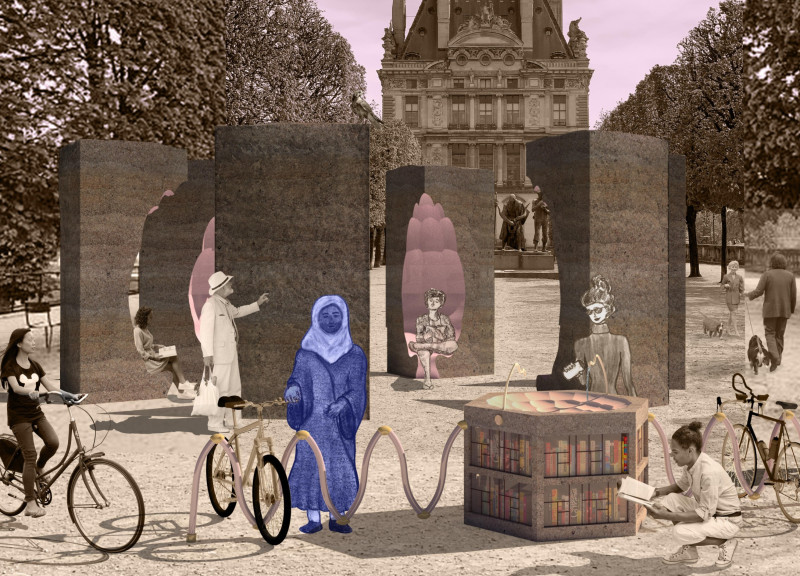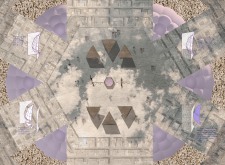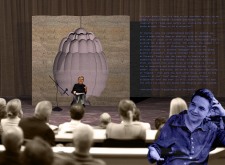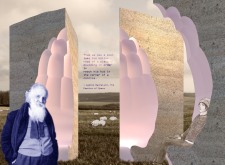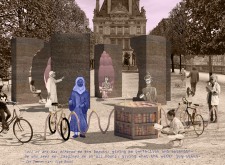5 key facts about this project
## Project Overview
The architectural design is situated within a context that emphasizes the relationship between built environments and natural landscapes. With a focus on facilitating human interaction and experience, the project aims to craft spaces that resonate emotionally and culturally. It draws inspiration from various disciplines including literature and philosophy, creating an environment where architecture interacts with broader human narratives.
### Spatial Arrangement and User Experience
The design features a radial layout that fosters interaction, characterized by geometric forms such as triangles and circles. This organization enables social engagement while creating dynamic spatial experiences. Various seating arrangements and podiums enhance functionality, with designs that incorporate natural motifs—such as a flower-shaped backdrop—that elevate both aesthetic appeal and thematic coherence. The carefully curated openings and contemplative areas integrate elements of nature, encouraging a seamless transition between indoor and outdoor spaces, reinforcing the project's connection to its surroundings.
### Material Composition
Material selection plays a pivotal role in defining the project's identity. Key materials include:
- **Fiberglass Panels**: These lightweight elements provide structural versatility while embodying organic shapes throughout the design.
- **Textured Stone and Concrete**: Serving as a counterbalance to the fiberglass, these materials evoke a sense of permanence, anchoring the structure within its environment.
- **Natural Fiber Textiles**: Utilized for their tactile qualities, these textiles add warmth and invite interaction from users.
- **Translucent Acrylic and Polymers**: Employed to diffuse light, these materials create ethereal spaces that alter user perception and experiences.
### Integrative Features
The project emphasizes adaptability through the use of versatile materials, allowing the architecture to respond effectively to different environmental conditions. Embedded quotes within the design encourage dialogue about creativity and cultural expression, reinforcing the space's role as a cultural landmark. This thoughtful composition ultimately promotes varied forms of engagement, catering to a broad spectrum of activities—from reflective solitude to dynamic discussions, thereby enriching the user experience.


